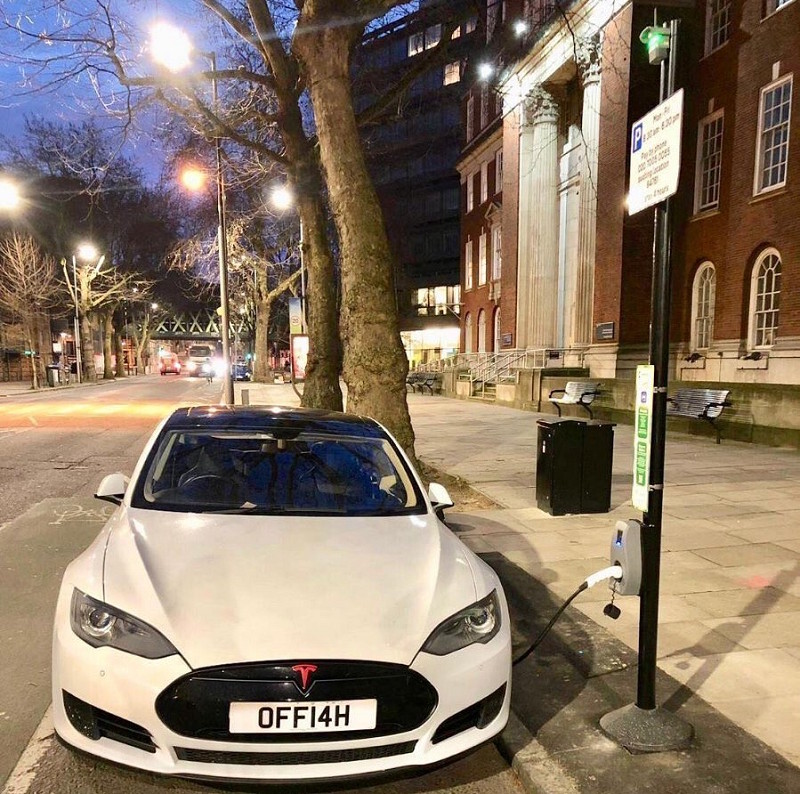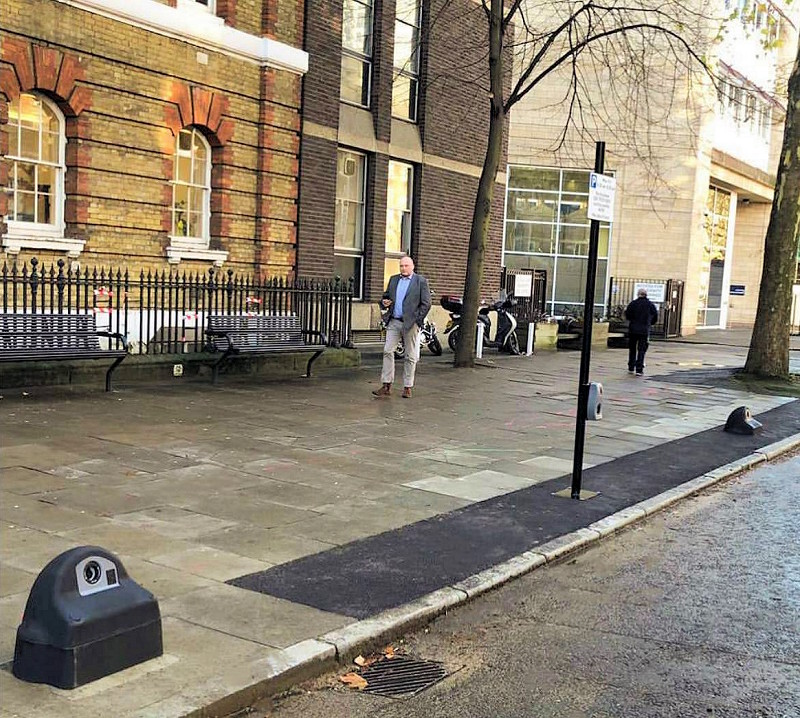Broadband Cabs Help Virgin Media Rollout 1,200 EV Car Chargers

At the start of this year broadband ISP Virgin Media UK conducted a trial (here) that utilised their existing cable ducts and street cabinets to help deploy charging points on residential streets for electric cars. Parent company Liberty Global has now decided to rollout a further 1,200 charging sockets over the next 18 months.
The exact details of how Virgin Media will harness their 40,000 powered street cabinets and 170,000km of ducts to support the new EV infrastructure – project name ‘Virgin Media Park & Charge‘ – remain unclear. Despite this we suspect that the arrangement is probably more about sharing space in existing cable ducts (i.e. new power cables), using the data connectivity from existing cables / cabinets and borrowing some of their civil engineering expertise.
The original trial was tested at around 6 sites during the spring of this year, with the first one going live in Southwark (pictured below). Clearly that trial must have gone well because they now intend to deploy a further 1,200 charging sockets across the United Kingdom over the next 18 months.
Advertisement
“The rollout of Electric Vehicle Charging Stations using Virgin Media’s connectivity will build a fully scalable electric vehicle charging network,” said Liberty Global in a statement.

All of this is being done as part of a large consortium of 19 organisations, which includes delivery partners Vattenfall and SMS plc and specialist technology partners Cenex, Ginger Town, Fully Charged, Connected Kerb, DETA and Loughborough University. The original trial also received some public funding for the project (‘EV Charging for Public Spaces‘) from the Government’s Innovate UK (part of a plan to help reduce car emissions).
We don’t yet know what the exact rollout plan is, although several local authorities are also involved including the West Midlands Combined Authority as well as Councils in Oxfordshire, Liverpool, Southend on Sea, Worcestershire, Wandsworth, Croydon, Northamptonshire, Hammersmith & Fulham and Belfast.
Advertisement
Jason Simpson, Liberty Global’s VP of Global Energy and Utilities, said:
“Leveraging street cabinets allows Liberty Global to look beyond traditional uses of telecom infrastructure and make a positive impact on the environment and in communities throughout the UK. By bringing more electric vehicle chargers and associated connectivity to Britain’s streets, we are making a significant contribution to Innovate UK’s ambition to encourage more people to buy electric cars.
We’re excited to be working with a wide array of partners who each bring their own areas of expertise to this exciting and innovative project.”
The idea of harnessing existing infrastructure to support new EV points is not a new one. For example, Deutsche Telekom has done something similar in Germany with 12,000 of their own cabinets and other UK broadband networks are also considering how they might be able to do something similar.
Certainly there are plenty of obstacles and you can’t do this everywhere. EVs tend to require significantly more power than broadband street cabinets, as well as much larger cables, although an operator that plans ahead for such things can often allow for additional space as part of future network upgrades or new builds.
The prize could be an additional revenue stream from existing infrastructure, albeit perhaps not a particularly big stream.. yet. Being able to create new business out of existing or future cost models and deployments is obviously something that would interest any telecoms operator. Clearly it makes enough sense for Liberty Global.
However we suspect that doing something like this might be more challenging for Openreach (BT), which has certain regulatory responsibilities to consider with respect to cable ducts and other aspects of their infrastructure.
Advertisement

Mark is a professional technology writer, IT consultant and computer engineer from Dorset (England), he also founded ISPreview in 1999 and enjoys analysing the latest telecoms and broadband developments. Find me on X (Twitter), Mastodon, Facebook, BlueSky, Threads.net and Linkedin.
« Full Fibre UK ISP Grain Connect Secure £10m Investment UPDATE






















































Comments are closed